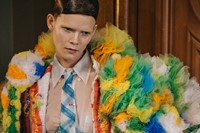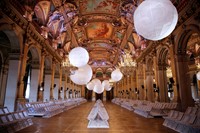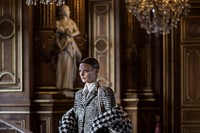Thom Browne may be best known for that most classic of men’s garments – the suit – but under the American designer’s ordered façade lies one of fashion’s most passionate proponents of the theatrical. At his shows, four times a year (twice for womenswear, twice for menswear) he conjures up sublime, enveloping worlds with one aim: to provoke a reaction from his audience. “I don’t ever want anybody to leave just thinking it was good,” he says.
There have been manicured gardens and frozen lakes (replete with woollen herringbone penguins), vast, empty swimming pools, the bare bones of a wooden house. Each of these worlds is not quite what it seems – rooms may be marked not with walls, but lines of white tape, an imagining of nature’s fauna may be entirely created from shades of grey tailoring wool. It makes for an experience both fantastical and unsettling, a testament to the designer’s ability to refocus the eye, to see the familiar in new ways.
It is this which defines his clothing, too. In the early 2000s, when Browne began designing out of his Upper East Side apartment, the grey suit was known for its ubiquity – representative of faceless, unimaginative corporate fashion. In his hands, though, this classic garment would resemble anything but; lending an oddity to its proportions, he shrunk it in the body and raised the hem to reveal a bare ankle, creating an entirely new take on a piece of clothing that already sat inside most men’s wardrobes. Since then, Browne’s influence abounds – the slim-cut suit, shorter in the jacket and leg, has become the archetype for modern tailoring.
Though trained in menswear, his womenswear, introduced in 2011, follows a similar rationale. “I start from the same classic tailored point of view for both collections,” he says over the phone from his New York office. “I feel like they complement each other really well.” As of last season, Browne would bring the collections even closer, shifting his womenswear show to Paris, where he shows his menswear. Far from adhering to the “exodus” narrative of brands abandoning an ailing New York Fashion Week, he moved to Paris simply to provide space for his conceptual ideas – and shows.
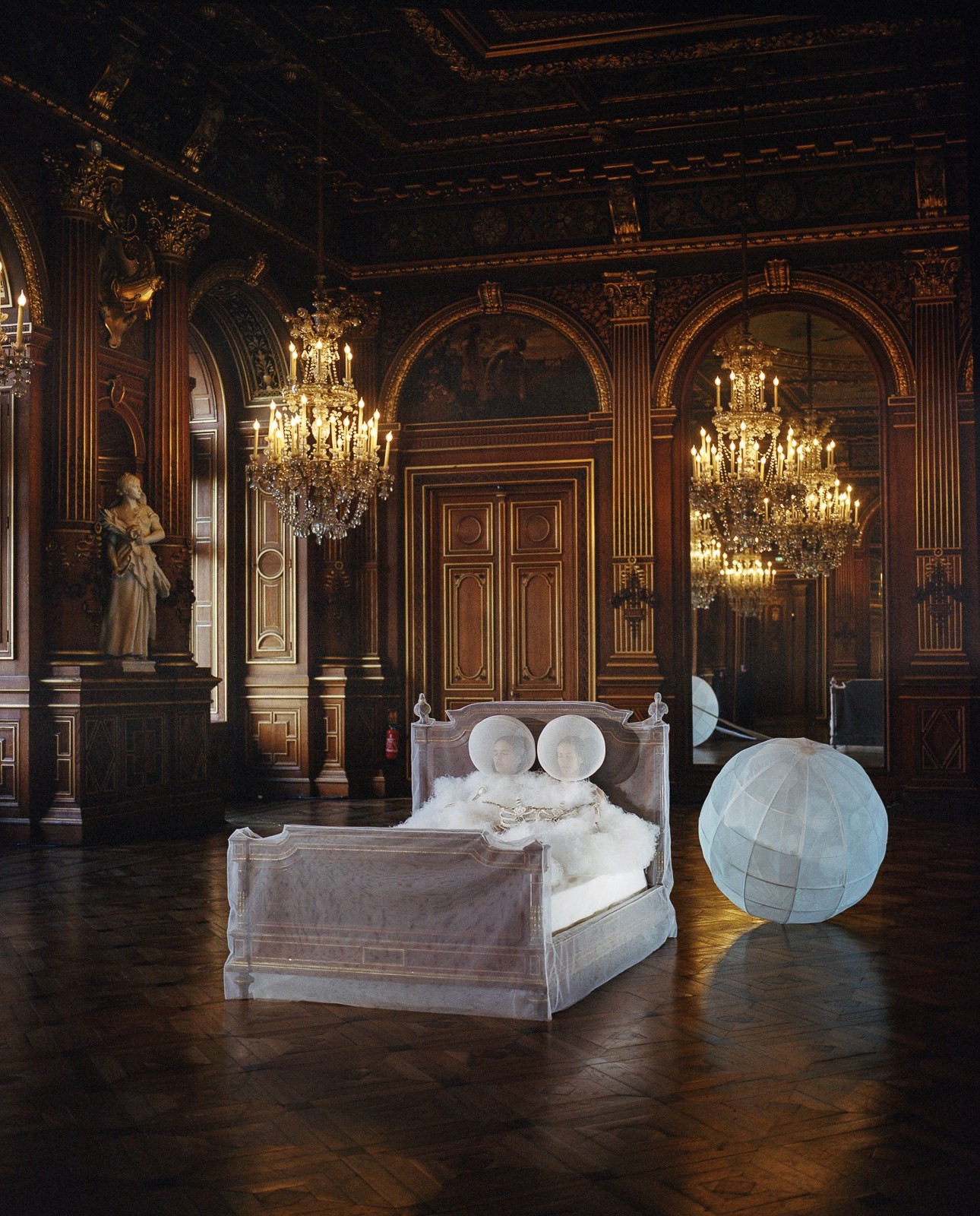
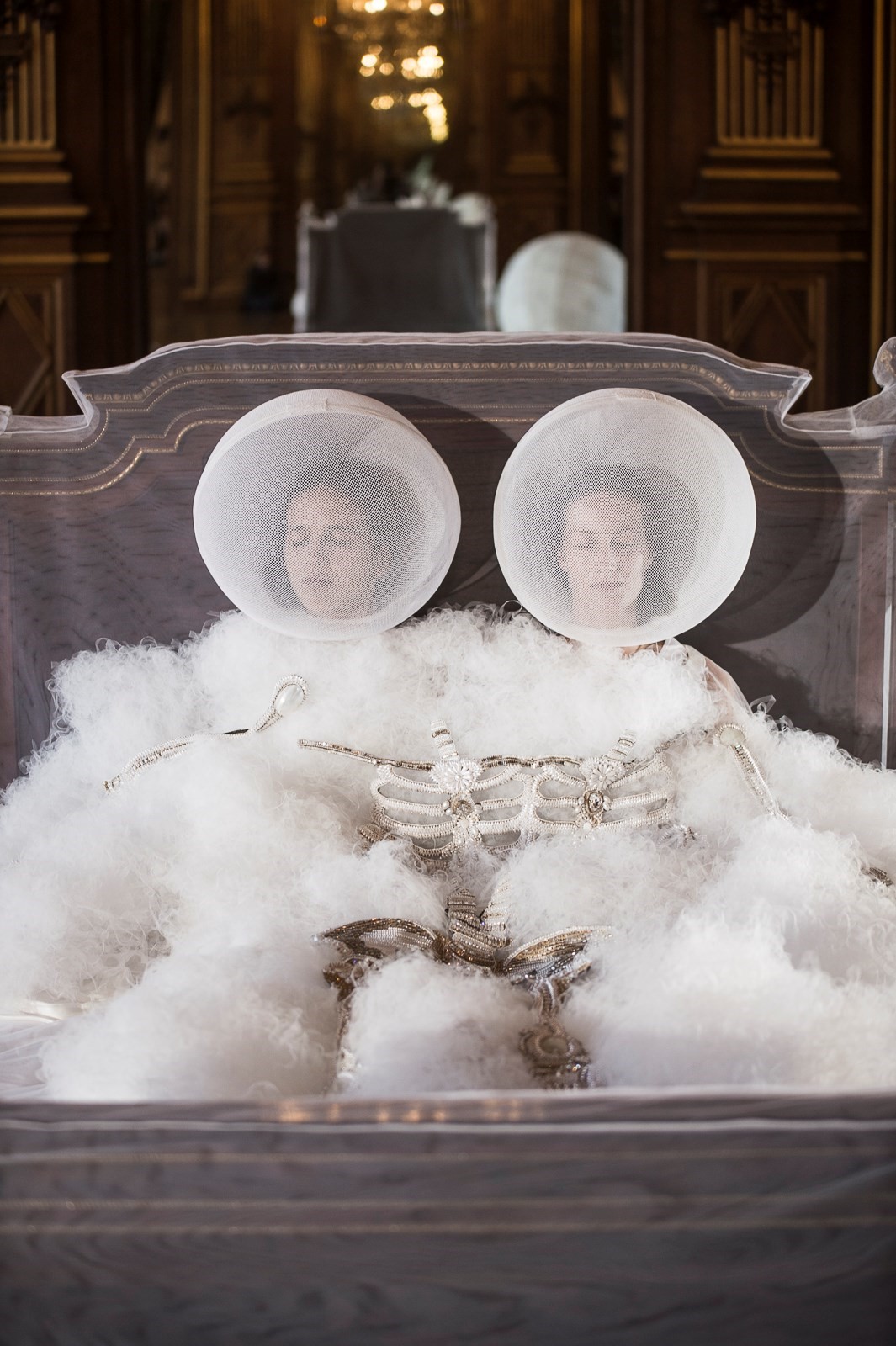
“Paris is this city that embraces true fashion, true conceptual ideas. It’s really the most important reason why I moved,” Browne says. “I think fashion is cultural in Paris. In America it is too, but in a sportswear, commercial way. There’s nothing wrong with that, but it’s not the way that I approach my collections.”
His first womenswear show in Paris, last season, provided perhaps his grandest spectacle yet – held in the city’s lavish Hôtel de Ville, guests were greeted by men in delicate white organza suits and towering skyscraper heels; inside, giant dangling white orbs hung from the ceiling. The collection, an ode in part to the Parisian art of haute couture, was a symphony in tulle; Browne took archetypal American fabrics like seersucker, checked cotton and madras, and recreated them in intricately woven strips of organza and tulle.
“I started with the idea of using tulle as the basis for the entire collection,” Browne explains. “It led into the idea of tulle being almost dream-like.” From there, he conjured up a fairytale, a story of two girls awakening from a dream into another, a land of unicorns and mermaids. In the clothes themselves, a reflection of just that – skirts descended into bead-encrusted mermaid fins, tailoring came with satisfying white froths of tulle around the hem. Less typical were the two ballerinas in lumpy, padded bodysuits, the pearl-encrusted layers appearing like rolls of flesh.
It was, as Browne intended, a show which prompted a reaction – though, in this case, a near universally positive one. “I think it is important that we give the world some exciting, fantastic, interesting things to look at and to talk about,” he says, though he does note the importance of a second, more commercial collection, that will end up in stores. For him, though, they have no place on the runway. “I don’t really understand a runway with commercial clothes,” he says. “For me it’s so much more. It’s not just the clothes in the collection; it’s also the story and the mood and experience.”
The time feels ripe for Browne’s brand of escapism. It does not pass by the designer, who was born in Allenstown, Pennsylvania, that his home country is going through an unprecedented period of flux. “I think we’re all aware and all approach whatever is going on in our own ways,” he says of the influence of politics in his work. “It’s even more important that we, as creative people, make beautiful things and inspire people.”
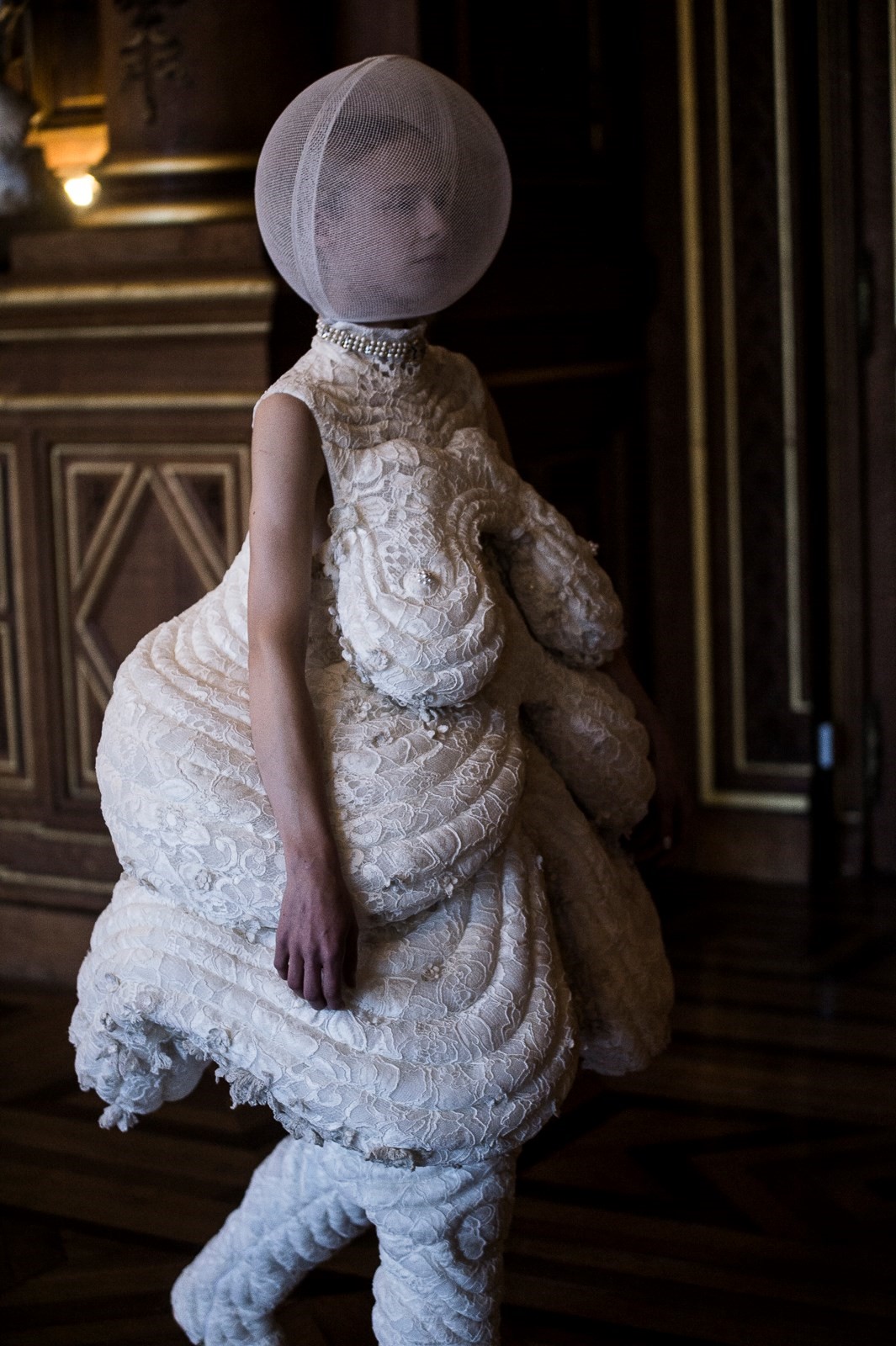
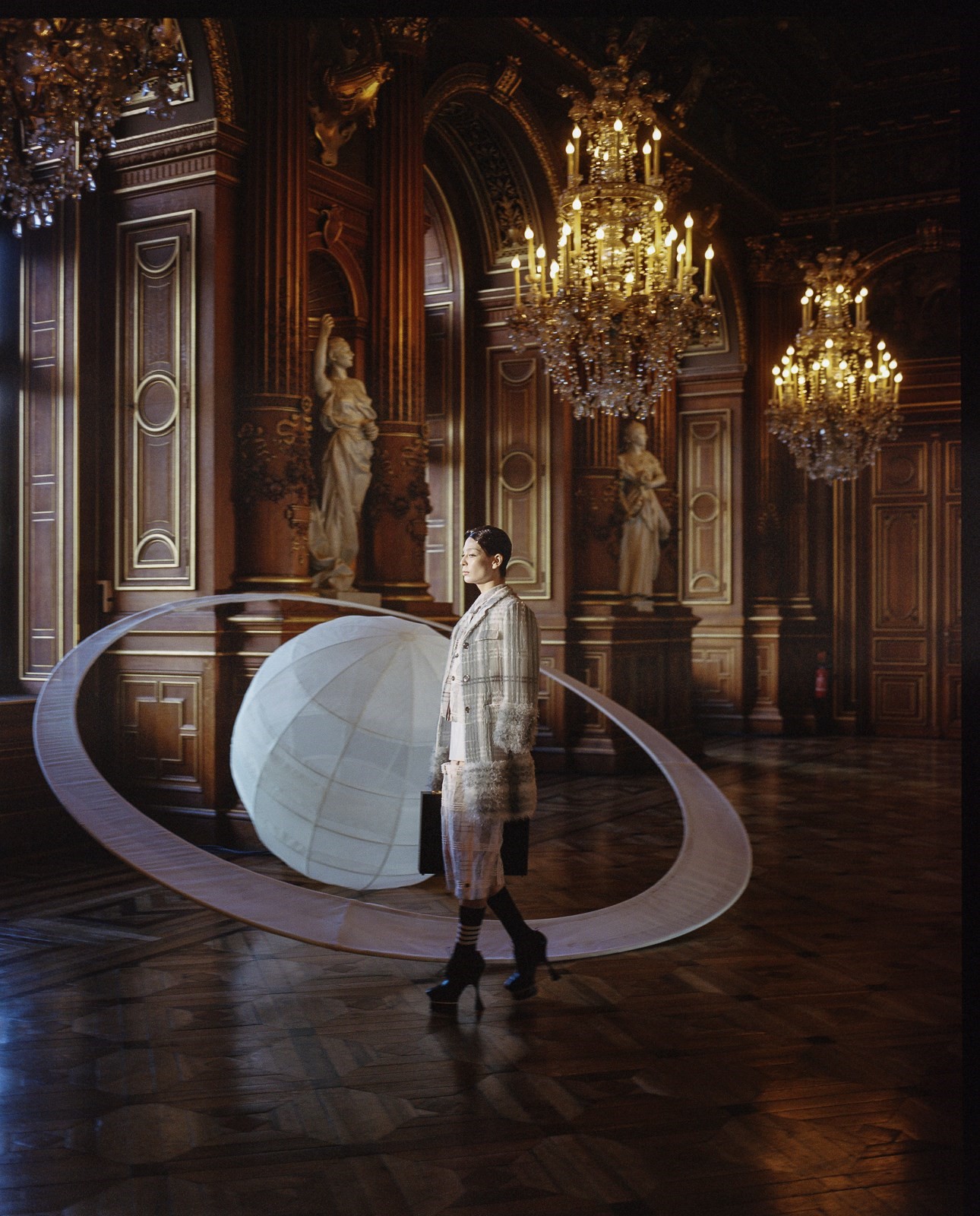
Browne’s own escape comes from going home at the end of each day, to spend time with his partner Andrew Bolton, the head curator of The Met’s Costume Institute, and his precious dog, wire-haired Dachshund, Hector. Hector is embedded at the heart of the Thom Browne brand, most famously immortalised as a life-sized bag, one regularly seen carried by legendary fashion critic Cathy Horyn. The real Hector often makes an appearance in Browne’s offices, too.
“I bring him in everyday. He’s not very well trained,” Browne laughs. “He’s looking at us right now through the door.” And what’s one of fashion’s most famous dogs wearing today? “He has a grey sweater on… A Thom Browne sweater. A new cashmere sweater.”

